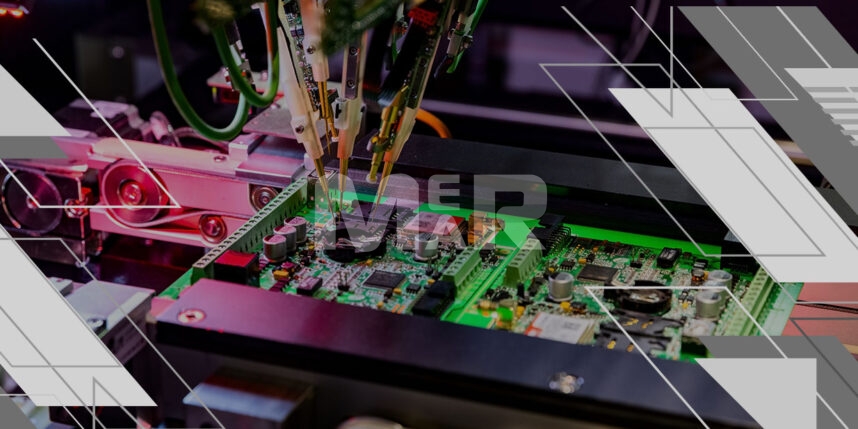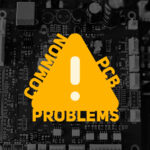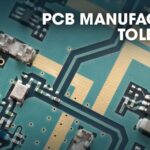Digital thread in PCB manufacturing – Improve it with software-based approach!

PCBs play an extremely key role in developing several modern technologies. Right from wearable devices to space launch systems, everything relies on PCBs! In many of these industries, several of which are mission-critical, speed is of the essence. However, the concept-to-market product lifecycle is long. This means that there could be many weeks before the engineer can have a working prototype in his hands and many more weeks before the final product is made available.
Traditional PCB Design Approach
The traditional design, build and test cycle typically works as follows:
- Step 1- The engineer creates the design.
- Step 2- The design is next sent to the manufacturer to build.
- Step 3- The manufacturer builds it & sends it back to the engineer for testing it.
- Step 4- The engineer identifies flaws, if any, and it is sent back to the manufacturer for rectification.
The loop repeats and several iterations may be necessary before the engineer is satisfied with the final prototype. The process can take weeks or months. The common causes of delays include:
- Information sent to the manufacturer is lost or misinterpreted.
- There are communication errors.
- Resolution of questions could come with their own set of issues.
- There is lack of connectivity & the manufacturing process may work in silos. This, of course, not only slows down operations but also keeps the engineer isolated.
One way to overcome these issues, and to accelerate PCBA (Printed Circuit Board Assembly) manufacturing, is to use software-driven automation.
Digital thread in manufacturing – Software PCB design approach
One way to speed up the excruciatingly slow PCBA manufacturing cycle is to leverage software automation. It helps to create a digital thread. In turn, the information flow from the engineer to the factory floor is automated. The engineer, therefore, can communicate directly with the manufacturer through the process of the DBT cycle. Needless to say, this adds both speed & accuracy. The other advantage with this automation is that operations are streamlined as communication no longer remains analog. With IoT devices integrated throughout the operations, various control systems can be monitored. This way data can be gathered & shared & continuous improvements made and the build process optimized.
What is digital thread?
The digital thread in PCB manufacturing provides the ability of access, transformation, integration, and analyzing data from systems to product lifecycle. It includes a communication framework which helps in streamlining an integrated view and data flow of products through its lifecycle.
To put it simply, Digital thread manufacturing does not rely on a physical connection between various stakeholders. Instead, there is a digital communication network, which connects various systems as well as users. Digital thread manufacturing, therefore, uses digital means of communication to link the manufacturing processes, principles & equipment.
In turn, this lends itself to real-time monitoring & control of the product throughout the manufacturing process. The big advantage here is that people may be spread across various geographical locations and there could be many diverse types of equipment.
Key advantages of digital thread manufacturing
Digital Thread Manufacturing offers a wide range of benefits, that include but are not limited to:
- It allows for full process control, by virtue of which potential issues can be easily identified. Importantly it also helps improve yields.
- You can monitor the real time process and therefore streamline operations. It also minimizes downtime as well as any potential delays.
- It is understood that it facilitates transparent communication and helps with white-box manufacturing.
- It facilitates agile manufacturing and hence it helps make changes quickly without any loss of quality. Also, it helps with data & information exchange.
- It is highly cost-effective as the costs for data processing and storage are significantly reduced with the use of clouds. Importantly, there is a lot of cost saving as it helps you to identify and mitigate risks early on.
- This ensures you do not have to contend with costly errors later in the cycle. Also, it helps respond to design changes quickly, thereby it saves time & also ensures that there is minimal wastage.
To sum up
The traditional prototyping process acts as a bottleneck when it comes to speedy product development. It also inhibits the engineers’ ability to innovate. With software automation and IoT networks, many of these issues that plague traditional manufacturing are solved. It works far better in terms of both quality and cost.
Mer-Mar Electronics provides a full range of PCB manufacturing services including PCB assembly, PCB fabrication, and prototyping services. We provide service according to your requirements.
Fill out the form below to request a quote or contact us at sales@mermarinc.com or call us at (760) 244-6149.








